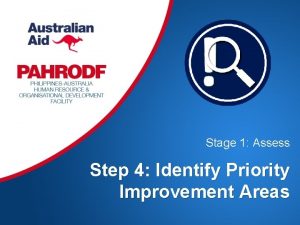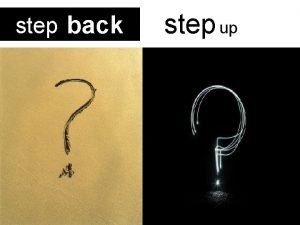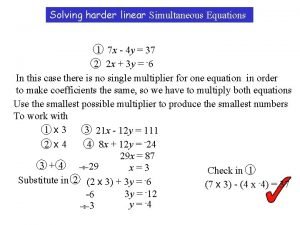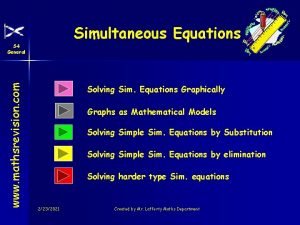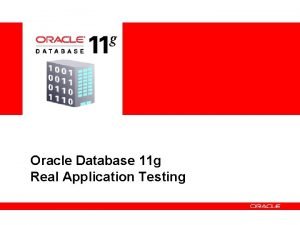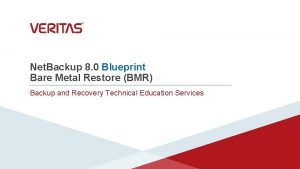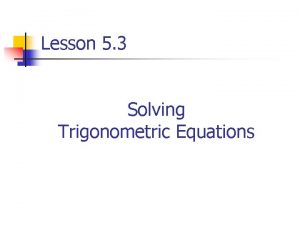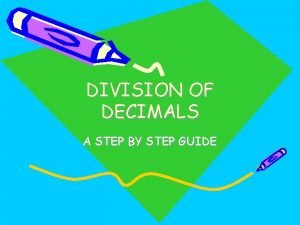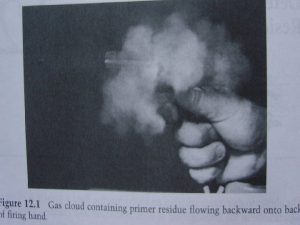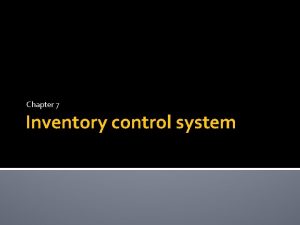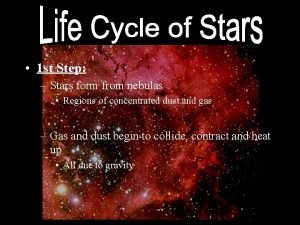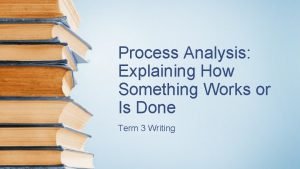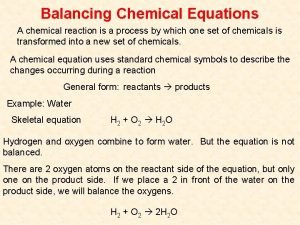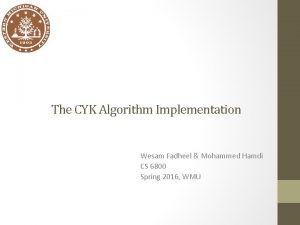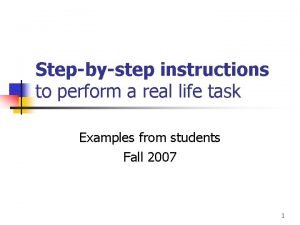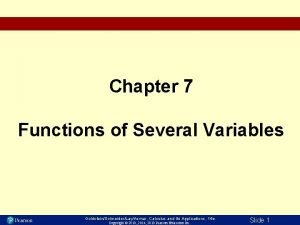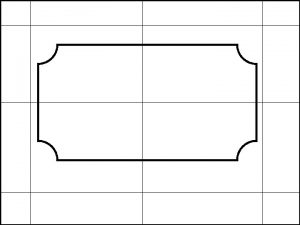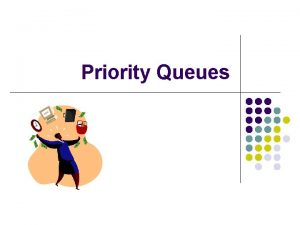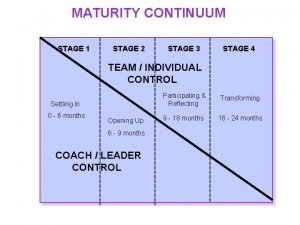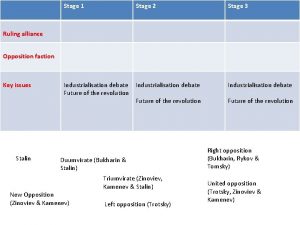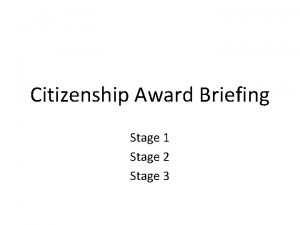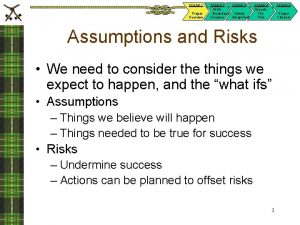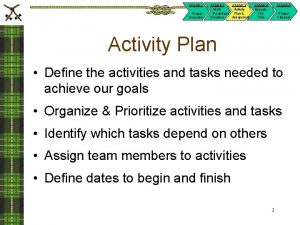Stage 1 Assess Step 4 Identify Priority Improvement








































































- Slides: 72

Stage 1: Assess Step 4: Identify Priority Improvement Areas

Assess – Steps Talk with Your Customers Get Organized • • Evaluation of School Performance Project Selection Criteria CI Project Template School Based CI Organizational Structure • • • Voice of the Customer Techniques for gathering VOC Guidelines for Survey question construction Affinity Diagram Problems with processing VOC Identify Priority Improvement Areas Walk the Process • • SIPOC Process Mapping Flowcharting Walk the Process Guidelines • • • Situating the Storm Cloud Data Collection Plan Data Analysis Selecting the Focused Problem Statement 2

Key Message The Focused Problem makes it easier to identify causes and take corrective action by identifying the critical storm clouds 3

Outline • • • Situating the Storm Cloud Data Collection Plan Data Analysis Selecting the Focused Problem Statement 4

Learning Objectives • At the end of this session, the participants should 1. understand basic data gathering process and analysis concepts 2. be able to identify improvement opportunities and key process steps by applying the appropriate tools 3. be able to formulate the focused problem statement. 5

SITUATING THE STORM CLOUD 6

Characteristics of a storm cloud? • Helps locate where the issues reside in the current process. • Relevant to the background of the project • Specific • Observable / Real WAITING • Measurable 7

Storm clouds are: • Pain points that are relevant to the critical school measure. These can be: – inconsistency in the school measure (ex. Grades of students in a quarter) – inconsistency in the process output (ex. Grades of students during formative test) – delay in the activities of the process (ex. Time spent in class preparation, extension of classes) – inconsistency in the activities of the process (ex. Time spent in teacher’s student interaction) – inability to deliver required output (ex. submission of homework) – inconsistency in the input (ex. student reading level) 8

Example: Background Only 3 out of 178 Grade IV pupils are Numerates in terms of scores. The Elementary School wanted to attain 25% of these pupils to achieve the level of Numerates are pupils who can add, subtract, multiply and divide whole numbers and can solve problems involving the four fundamental operations. 9

PROCESS MAP in PROBLEM SOLVING GIVING MORE EXAMPLES PROBLEM SOLVING SELECTION DISCUSSION RE-TEST AND FEEDBACK ON TEST RESULT TEST ON PROBLEM SOLVING CHECK ON THE ANSWER 10

PROCESS MAP in PROBLEM SOLVING INCONSISTENT DISCUSSION TIME GIVING MORE EXAMPLES PROBLEM SOLVING SELECTION DISCUSSION RE-TEST AND FEEDBACK CAN’T PERFORM BASIC OPERATION FEEDBACK ON TEST RESULT CANNOT COMPLETE AGONA CORRECTLY TEST ON PROBLEM SOLVING CHECK ON THE ANSWER 11

DATA COLLECTION 12

Data Collection • Data Collection Plan • Data Collection Forms • Tips on Data Collection 13

How Can Data Help You? 14

By Showing What Really Is 15

Data Help Us. . . – – – Separate what we think from what is really happening Confirm or disprove preconceived ideas and theories Create a baseline of performance Able to see the pattern of the problem over time Measure the impact of changes on a process Identify and understand relationships that might help explain variation – Monitor and control a process – Avoid “solutions” that don’t actually solve the real problem 16

Desirable Data Characteristics • Data should be: - Sufficient - Relevant - Representative - Contextual • Ensure gathering and analysis of data from a stable time period relevant to the problem or question being tackled. 17

DATA COLLECTION PLAN 18

Data Collection Plan Features Data Collection Plan Project ____________ What questions do you want to answer? Be clear about your question so that you are going to be correct when you collect data Data What Operational Definition and Procedures Measure type/ Data type Define the data you need to collect and its type. This will guide you in terms of how you can present it later. How measured 1 Related conditions to record 2 Sampling notes How/where recorded (attach form) An operational definition tells exactly how you will go about collecting and recording the data 20

Operational Definitions • An operational definition is a precise description that tells how to get a value for the characteristic you are trying to measure. It includes what something is and how to measure it. An operational definition: – Removes ambiguity so that all people involved have the same understanding of the characteristic or feature in question. – Describes your way of measuring that characteristic or feature. 21

Features of an Operational Definition – It must be specific and concrete. – It must be measurable. – It must be useful to both you and your customer. – There is no single right answer. 22

Types of Data Continuous Data • Often obtained by use of a measuring system. • The usefulness of the data depends on the quality of the measurement system. • Counts of non-rare occurrences are best treated as continuous data. Discrete Data • Includes percentages, counts, attribute, and ordinal. – Percentages = the proportion of items with a given characteristic; need to be able to count both occurrences and non-occurrences. – For count data, it is impossible or impractical to count a non-occurrence; the event must be rare. • Occurrences must be independent. 23

Developing a Sampling Scheme • There are many times when collecting all the data from a process isn’t possible. – There may be too much data, and it would be impractical, too costly, or too time consuming to collect and analyze it all. – Collecting the data may be destructive (e. g. , taste testing) and you need to minimize product loss. • Sampling means collecting only some of the data. – Statistical methods allow us to make sound conclusions about a process even from a relatively small sample. This is called “statistical inference. ” 25

What Is Sampling and Why Do It? Sampling is • Collecting a portion of all the data. • Using that portion to draw conclusions (make inferences). Why sample? Because looking at all the data may be • Too expensive. • Too time-consuming. • Destructive (e. g. , taste tests). Sound conclusions can often be drawn from a relatively small amount of data. 26

Example: Data Collection Plan 28

DATA COLLECTION FORMS 29

Data Collection Forms • Samples of common data collection forms Checksheet Report Preparation Confirmation Checksheet Frequency Plot Completion Data Package Weight Planned date Done? Step 16. 0 16. 1 16. 2 16. 3 16. 4 16. 5 16. 6 16. 7 16. 8 Weight in ounces Actual date Planned duration Actual duration Notes Project completed 6 -12 6 -26 N/A Cust requested changes Client review & approval 6 -17 7 -6 5 d 10 d Client personnel on vacation Final report, draft 6 -30 7 -21 13 d 15 d Final report review 7 -12 7 -28 12 d 7 d Final report revisions 7 -21 8 -2 9 d 5 d Desktop publishing of report 7 -28 7 d Final report submission 7 -30 2 d Minor changes requested Tally Sheet Checkout Line Delays Cashier Wendy Reason Date Frequency Concentration Diagram May 19 Comments Price check needed Expense Report July 2 ______ 94 Name: ___________ Week ending 19___ Date Project Hotel Code No cashier available EEEE Register out of tape E Trans RR Meals Misc RRR R EEEE RRR Total Comments EEEEE MMTM F EA Not enough money Forgot item Wrong item Manager assistance needed Other Totals Correct cashier error OK check EEE E A EE A E E E E AE AEEA E: Entry missing R: Receipt missing M: “Misc. ” not explained T: “Trans” no explained A: Arithmetic error 30

Checksheet Features Defines what data is being collected Lists the characteristics or conditions of interest Operator Machine Downtime - Line 13 - Wendy Reason Date Frequency May 19 Comments Carton Transport Metal Check Has room for comments No Product Sealing Unit Barcoding Conveyor Belt Bad Product Burned Flakes Low weight Other Includes place to put the data May want to add space for tracking stratification factors 31

Collecting Time Data 1. Review operational definitions for the starting and ending points of each process step. 2. Note down any information observed that is relevant to the time of the process step 3. Develop a data collection form Process Step Time Start Time End Cumulative Time Notes 32

Getting Data from a Process • A process is dynamic and ever-changing • Sample systematically or with subgroups (not randomly) across time. • Preserve the time order to represent the process behavior better. • Try to sample from enough time periods to fairly represent the sources of variation in the process. • Apply a consistent interval between samples (every 10 th unit, every 7 th unit; every day, every month, etc. ). • Collect small samples more frequently so that the process trend is captured 33

TIPS OF COLLECTING DATA 34

Tips when collecting data • Have an orientation on gathering data • Do preliminary tests on collection • Measuring device is sufficient to capture accuracy needed • Procedure of collecting data is consistent across all data collectors • Data collected should be consistent in the unit of measure • Process owners and subjects are informed of the data collection 35

DATA ANALYSIS 36

Data Analysis • Graphical Data Display and Analysis - Stratification - Line Chart - Histogram Bins - Pareto Chart - Scatter Plot 37

Key Message The appropriate use of graphical display and analysis tools coupled with the proper treatment of data leads to a clearer and better understanding of the problem to be tackled. 38

GRAPHICAL DATA DISPLAY & ANALYSIS 39

Stratification • When data is lumped together the meaning and insight from the data can be clouded or distorted. WHEN TO STRATIFY: • Before collecting data. • When data come from several sources or conditions, such as classes, days of the week, suppliers or year level groups. • When data analysis may require separating different sources or conditions. 40

Stratification Procedure • Prior to data collection, consider which information about data source might have an effect on the results. Set up the data collection so that you collect that information as well. • When plotting or graphing the data use different marks or colors to distinguish data from various sources or plot in different panels according to the source. • Analyze the subsets of stratified data separately. 41

Line Graph • A time plot is a graph of data in time order. • It show trends or patterns over a specified period of time. 42

Line Graph: Individual Practice Exercise The following is a 15 -year data on drop-out rate for QC division schools. We will use Excel to do a run chart. Year 1 2 3 4 5 6 7 8 9 10 11 12 13 14 15 Drop-Out Rate 3. 4 2. 3 2. 6 3. 2 3. 5 3. 1 2. 6 3. 5 3. 3 3. 8 4. 2 4 3. 9 4. 5 4. 2 43

7/93 6/93 5/93 3/93 4/93 2/93 12/92 11/92 10/92 8/92 9/92 7/92 6/92 5/92 4/92 2/92 3/92 11/91 12/91 10/91 9/91 1300 1100 900 700 500 300 10/91 AD-727 Month Library Tons of Waste Collected Tons 6/93 7/93 5/93 3/93 4/93 1/93 2/93 12/92 10/92 11/92 8/92 9/92 7/92 5/92 6/92 4/92 3/92 2/92 12/91 11/91 10/91 Total Tons of Waste Collected 9/91 3200 3000 2800 2600 2400 2200 2000 10/91 Tons Disaggregating (Stratifying) the Line Chart Month 7/93 5/93 6/93 4/93 3/93 2/93 12/92 11/92 10/92 9/92 8/92 7/92 5/92 6/92 4/92 3/92 2/92 12/91 11/91 10/91 1300 1100 900 700 500 300 9/91 6/93 7/93 5/93 3/93 4/93 2/93 12/92 11/92 9/92 10/92 8/92 7/92 6/92 5/92 4/92 3/92 2/92 12/91 11/91 Tons Canteen Tons of Waste Collected 10/91 1300 1100 900 700 500 300 9/91 10/91 Tons Month Gym Tons of Waste Collected Month Notes for Stratified Line Chart: 1. Encode data from each source in separate columns. 2. Highlight multiple columns at the same time. Choose a Line Chart type. Excel does stratification for the user giving a line plot for each column or data source. 44

Histogram • A frequency plot shows the shape or distribution of the data by showing how often different values occur. 45

Number of Bins in a Histogram Too Much Bins Too Few Bins • Details data too much thus failing to make pertinent patterns immediately obvious • Aggregates data too much thus hiding pertinent patterns that effectively describes data 46

Number of Bins in a Histogram Right Number of Bins • Makes noticeable the center and spread of data in one glance Right Number of Bins Dependent on Number of Data Points Tabular Guide on Number of Bins Depending on Number of Data Points Number of Bins 20 -50 6 51 -100 7 101 -200 8 201 -500 9 501 -1000 10 1000+ 11 -20 47

Histogram Construction Steps 1. Count the number of data. 2. Determine the number of bins. 3. Get the maximum and minimum data value. Compute the difference between the two and divide by number of bins. Call this resulting number as the class width. (Round off to a convenient value. ) 48

Histogram Construction Steps 4. The smallest data is the lower limit of the first bin range. Add class width to this for the lower limit of next bin. Upper limit of a bin is the number before the lower limit of the next bin range. Do this until the maximum value is reached. 5. Count the number of data falling into a bin range and do a bar chart. 49

Histogram: Individual Practice Exercise The following are the grades of 100 high school students in their Algebra final exam. Using your Excel build a histogram for this data. 50

Pareto Chart • The Pareto chart is a frequency distribution (or histogram) of attribute data arranged by category. 51

Pareto Chart: Individual Practice Exercise The following are listed reasons as to why students are having problems accessing files in the computer lab. Construct a Pareto Chart for this data using Excel. Reasons Frequency Unable to Download 50 Can’t Find the File 30 Open as Read Only 15 Can’t Change Background 7 Can’t Open the File 6 Found a Bug 5 Can’t save Changes 4 Don’t Have Excel 4 Doesn’t Work in Open. Office 4 52

Difference of Histogram & Pareto Chart • • • Use histogram if data to be tallied is quantitative. Computation of average, variability and changes over time is possible. Can be used to display how bad the problem is. • • • Use pareto chart if data to be tallied is qualitative. Average and variability computation not possible. Can be used to display which and where the problem is the greatest. 53

Scatter Plot • Graphs pairs of numerical data, with Y one variable on each axis, to look for a relationship between them. • If the variables are correlated, the points will fall along a line or curve. The better the correlation, the tighter the points will hug the line. X 54

Scatter Plot: Individual Practice Exercise In 2 sections in the 4 th year level, the final grades of the students in Math and Science were gathered. Construct a scatter plot using Excel. Section A Math Scores 84 93 71 81 59 65 48 48 51 47 67 72 95 89 65 78 93 74 93 Section B Science Scores 98 84 57 73 71 65 58 38 56 47 80 79 89 85 65 86 95 74 96 Math Scores 87 96 74 84 62 68 51 51 54 50 70 75 98 92 68 81 96 77 96 Science Scores 75 85 78 76 70 65 60 80 65 75 76 65 82 75 50 53 90 85 82 55

Some Final Words • Use and take advantage of MS Excel. • Take care to stratify data from collection to analysis. • Scales and categories matter. • Data types dictate the appropriate graphical display tool. 56

SELECTING THE FOCUSED PROBLEM STATEMENT 57

Focused Problem Statement • Objective – Focus the improvement effort by analyzing the gathered data on the process area • Deliverables – Focused problem statement – Data that pinpoints problem 58 http: //us. 123 rf. com/400 wm/400/chudtsankov 1202/chudtsankov 120200196/12493294 -detective-dog-holding-a-magnifying-glass. jpg

Link to walk the process • The team has a detailed process map of the process for improvement • The team has identified storm clouds in the details steps of the process for improvement • Identified relevant measures on storm clouds items • The team has developed a data collection plan 59

What is a Focused Problem Statement • Problem statements that pertain to a specific component only • Problem statements that include information about the following questions • • What is the problem, and how often is it happening Where is it happening Who is engaged in the behavior When the problem is most likely 60

The Focused Problem Definition SHALLOW Quality not quantity Depth of Analysis DEEP FEW Problems Dealt With MANY 61

Focusing a Problem Definition The canteen service is poor. Broad or vague Somewhat focused Narrow focus What: Poor service The cashier service of the canteen is taking too long. Monitoring last Jan. 2014 showed that the cashier service of the canteen during class recess during Mondays takes 30 minutes to finish, versus the standard of 15 minutes. Somewhat Broad or focused vague What: Poor Service What type of service: Cashier service What about the service: It is too long. Broad or vague Somewhat focused Narrow focus What: Poor Service What type of service: Cashier service What about the service: It is too long. How long: 30 minutes What is the standard: 15 minutes When is this problem the greatest: Recess time. on Mondays When was this observed: Jan. 2014 62

Practice: Focused Problem Statements Scenario Student Counseling Student Grade Computation Attendance Monitoring Broad and Vague Narrow Focus Counseling takes a long time Pre-counseling activities takes 2 x longer than the actual counseling for students with offenses Wrong computation of grades All the 2 nd yr students are complaining that their final grade in English this 2 nd qrtr is erroneously low Attendance is not accurate Attendance records are not accurate for Section A during the first 3 weeks of the month 63

Selecting the Focused Problem Statement among Storm Clouds Which one should you focus on? Issue 1 Issue 2 Issue 4 Issue 3 Issue 5 64

Relationship of Storm Clouds • A Storm cloud may have an effect on another storm cloud • Storm clouds that have an effect on another storm cloud have a causal relationship with the other storm cloud 65 http: //2. bp. blogspot. com/_Hr-M 9 Z 6 s. YJo/THSh. TKKDf. FI/AAAAA 0 Y/Nc. GXci. WOYq. A/s 640/2%2 Bbirds%2 B 1%2 Bstone. jpg

Storm Clouds with Causal Relationship Absences Students Failed in Math Student Health Absences Teaching Time Spent in Class Mean Percentage Scores of Class ? 66

Causal Relationship Example School Measure: Low number of passing students in Math for the Grade Level Issue 3 Issue 1 Check Attendance Do Motivation Activities Issue 2 Review Previous Lesson Lecture on Current Lesson Issue 4 Assess Student Mastery Give Homework Issue 1: Most students are not participating in the class discussion. Issue 2: Students can not see the writing on the black board Issue 3: The class is not paying attention Issue 4: Only 20 out of 60 students have a passing average (60% passing rate) for the past three summative tests 67

Causal Relationship Example Continued Scenario 1 Scenario 2 Issue 1 Issue 4 Issue 1 Issue 3 Issue 2 Issue 1: Most students are not participating in the class discussion. Issue 2: Students can not see the writing on the black board Issue 3: The class is not paying attention Issue 4: Only 20 out of 60 students have a passing average (60% passing rate) for the past three summative tests 68

Key Message The Focused Problem makes it easier to identify causes and take corrective action by identifying the critical storm clouds 69

Situating the Storm Clouds Example Poor Classroom Structure Inappropriate Ready-made Lesson Plans Prepare Lesson Plan Update/ Improve Instructional Materials Extra effort Set Classroom Environment Overlooked Test Results Analysis Deliver Instructions (Reading Lessons) Evaluate Pupils Not geared to the enhanced curriculum 70

Example: Focused Problem Statement • Preparing of Lesson takes extra effort from the teacher because of the time it takes 60 – 90 minutes which is more than the desired time of 30 – 45 mins. Formulate Objective for class (3 -5 minutes) Prepare materials (5 -10 minutes) Make Review, Drill, Motivate (3 -5 minutes) Design Lesson Delivery (10 -15 minutes) Preparation of Materials for Assessing Student Mastery(1015 minutes) Design Home activities (3 -5 minutes) 73

ACTIVITY 74

SIPOC ( Current State)

“A problem correctly stated is a problem half solve” 85

GOD BESS!! THANK YOU Juliet-Mabinay NHS Team Leader 86
 Step 1 step 2 step 3 step 4
Step 1 step 2 step 3 step 4 Identify priority improvement areas
Identify priority improvement areas Step 1 in 7 step improvement process
Step 1 in 7 step improvement process Burman's priority list gives priority to
Burman's priority list gives priority to Priority mail vs priority mail express
Priority mail vs priority mail express Orm mishap probability subcategory b
Orm mishap probability subcategory b Itil 7 step improvement process
Itil 7 step improvement process Early mesial shift
Early mesial shift Dino the dinosaur text structure
Dino the dinosaur text structure Informative essay outline
Informative essay outline Steps of argumentative essay
Steps of argumentative essay Step up step back
Step up step back Factoring steps
Factoring steps Linear simultaneous equations
Linear simultaneous equations Simultaneous equations step by step
Simultaneous equations step by step Combine like terms steps
Combine like terms steps What food do plants make
What food do plants make Particle filter matlab code
Particle filter matlab code Oracle real application testing
Oracle real application testing Netbackup bare metal restore step by step
Netbackup bare metal restore step by step тригонометрические уравнения
тригонометрические уравнения Face shape step by step
Face shape step by step How to draw a punnett square
How to draw a punnett square How to save viva video in gallery
How to save viva video in gallery Cite the steps in installing fusioncompute
Cite the steps in installing fusioncompute Graph of sine and cosine functions
Graph of sine and cosine functions How do you divide decimals step by step
How do you divide decimals step by step Dermal-nitrate test
Dermal-nitrate test Isosceles triangle flower arrangement
Isosceles triangle flower arrangement Complete the square formula
Complete the square formula Perfect square trinomial
Perfect square trinomial How to balance chemical equations step by step
How to balance chemical equations step by step Step-by step inventory process
Step-by step inventory process Kesler science balancing chemical equations
Kesler science balancing chemical equations Steps of blood flow through the heart
Steps of blood flow through the heart Chapter 15 musculoskeletal system practical
Chapter 15 musculoskeletal system practical Mesial step vs distal step
Mesial step vs distal step Fard wudu
Fard wudu How are stars formed step by step?
How are stars formed step by step? Hook introduction examples
Hook introduction examples Phase one denial
Phase one denial Solving two step inequalities
Solving two step inequalities How something works example
How something works example Sequence of making pochampally saree
Sequence of making pochampally saree 6 steps of dishwashing
6 steps of dishwashing How do you balance a chemical equation
How do you balance a chemical equation How to create inbound proxy in sap abap
How to create inbound proxy in sap abap Example of a quadratic inequality
Example of a quadratic inequality Evaluate piecewise functions
Evaluate piecewise functions Cyk algo
Cyk algo The 8-step method:
The 8-step method: Step-by-step examples
Step-by-step examples Caiet de evaluare step by step
Caiet de evaluare step by step How to solve two step inequalities
How to solve two step inequalities Engine disassembly steps
Engine disassembly steps What is a photogram
What is a photogram Lagrange multiplier calculator step by step
Lagrange multiplier calculator step by step Caiet de evaluare step by step
Caiet de evaluare step by step Church planting steps
Church planting steps Bronchoscopy step by step
Bronchoscopy step by step Life cycle of a star video
Life cycle of a star video Trig equations
Trig equations Factoring polynomials by completing the square
Factoring polynomials by completing the square Portfolio selection process
Portfolio selection process Piecewise step function
Piecewise step function Computer assembly step by step
Computer assembly step by step How to draw a compass rose step by step
How to draw a compass rose step by step Limerick poems
Limerick poems Isometric drawing practice
Isometric drawing practice Romania with step costs in km
Romania with step costs in km Dimensional analysis steps
Dimensional analysis steps Chapter 22 hair removal
Chapter 22 hair removal How to write a persuasive essay step by step
How to write a persuasive essay step by step

